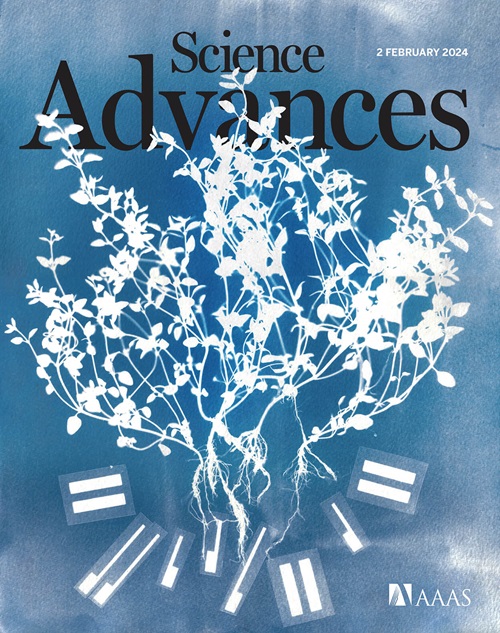Non-Majorana origin of anomalous current-phase relation and Josephson diode effect in Bi2SE3/NbSe2 Josephson junctions
IF 11.7
1区 综合性期刊
Q1 MULTIDISCIPLINARY SCIENCES
引用次数: 0
Abstract
Josephson junctions (JJs) are key to superconducting quantum technologies and the search for self-conjugate quasiparticles potentially useful for fault-tolerant quantum computing. In topological insulator (TI)–based JJs, measuring the current-phase relation (CPR) can reveal unconventional effects such as Majorana bound states (MBS) and nonreciprocal transport. However, reconstructing CPR as a function of magnetic field has not been attempted. Here, we present a platform for field-dependent CPR measurements in planar JJs made of NbSe2 and few-layer Bi2Se3. When a flux quantum threads the junction, we observe anomalous peak-dip CPR structure and nonreciprocal supercurrent flow. We show that these arise from a nonuniform supercurrent distribution that also leads to a robust and tunable Josephson diode effect. Furthermore, despite numerous previous studies, we find no evidence of MBS. Our results establish magnetic field–dependent CPR as a powerful probe of TI-based superconducting devices and offer design strategies for nonreciprocal superconducting electronics.
Bi 2 SE 3 /NbSe 2 Josephson结中异常电流-相位关系的非majorana起源和Josephson二极管效应
约瑟夫森结(JJs)是超导量子技术的关键,也是寻找对容错量子计算潜在有用的自共轭准粒子的关键。在基于拓扑绝缘体(TI)的JJs中,测量电流相关系(CPR)可以揭示诸如马约拉纳束缚态(MBS)和非互易输运等非常规效应。然而,重建心肺复苏术作为磁场的函数还没有尝试。在这里,我们提出了一个在由nbse2和少数层bi2se3制成的平面JJs中进行场相关CPR测量的平台。当通量量子Φ 0穿过连接处时,我们观察到异常峰倾角CPR结构和非互易超电流流动。我们表明,这些是由非均匀的超电流分布引起的,这也导致了稳健和可调谐的约瑟夫森二极管效应。此外,尽管之前有很多研究,但我们没有发现MBS的证据。我们的研究结果建立了磁场依赖CPR作为基于ti的超导器件的强大探针,并提供了非互易超导电子器件的设计策略。
本文章由计算机程序翻译,如有差异,请以英文原文为准。
求助全文
约1分钟内获得全文
求助全文
来源期刊

Science Advances
综合性期刊-综合性期刊
CiteScore
21.40
自引率
1.50%
发文量
1937
审稿时长
29 weeks
期刊介绍:
Science Advances, an open-access journal by AAAS, publishes impactful research in diverse scientific areas. It aims for fair, fast, and expert peer review, providing freely accessible research to readers. Led by distinguished scientists, the journal supports AAAS's mission by extending Science magazine's capacity to identify and promote significant advances. Evolving digital publishing technologies play a crucial role in advancing AAAS's global mission for science communication and benefitting humankind.
 求助内容:
求助内容: 应助结果提醒方式:
应助结果提醒方式:


